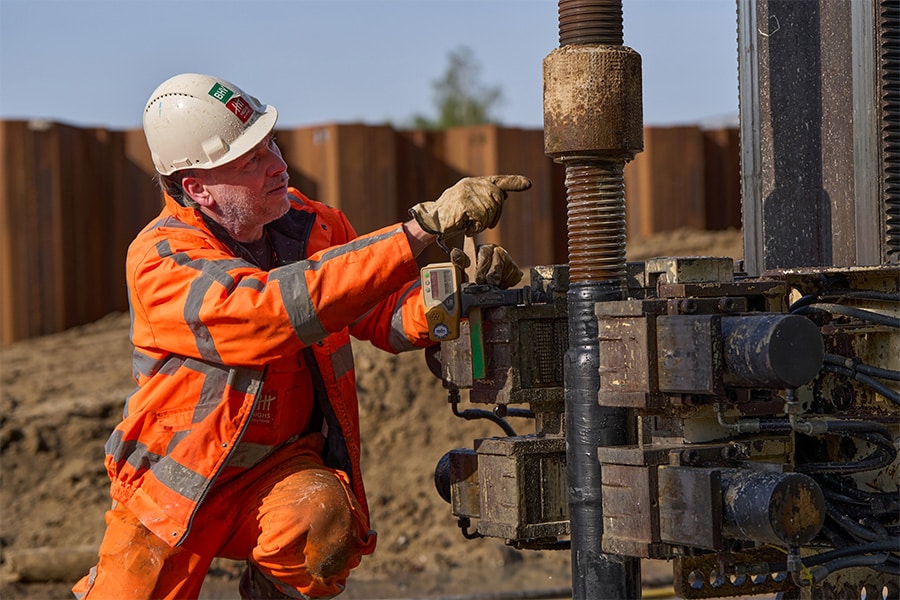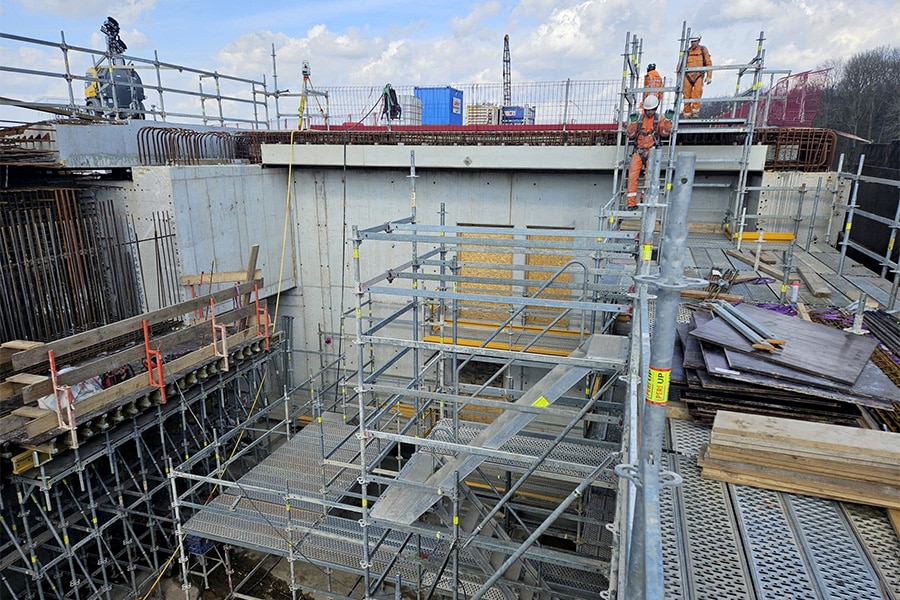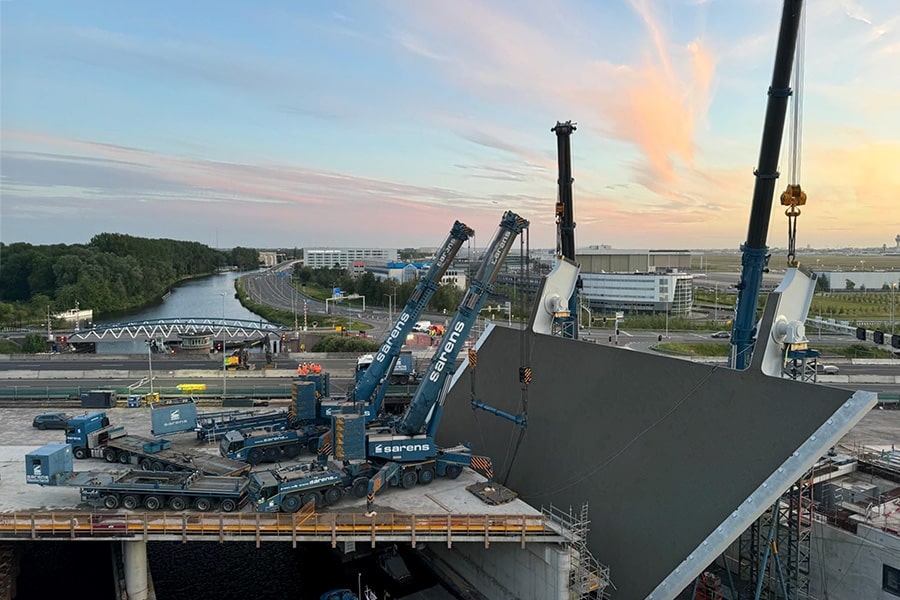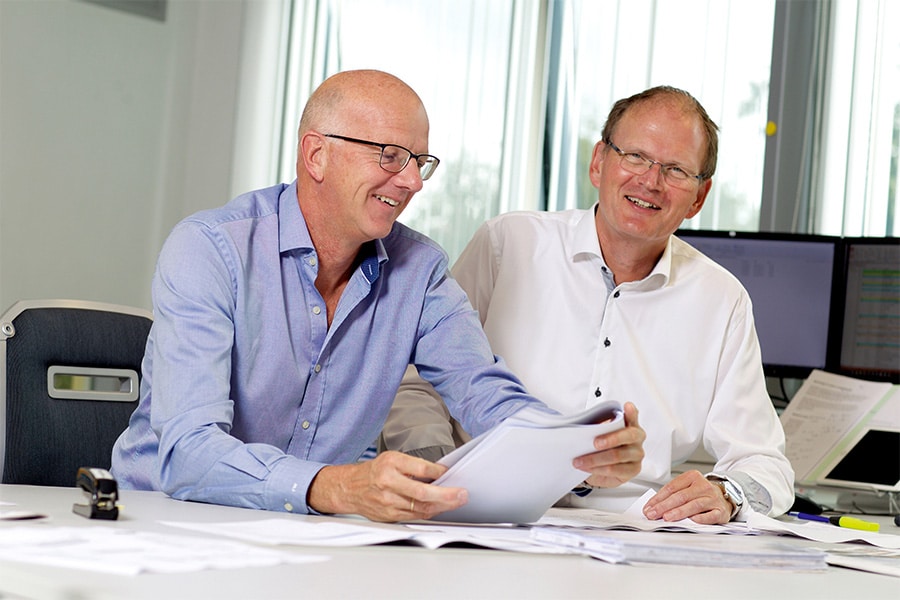
Foundation with maximum flexibility and zero emissions
"A leading provider of environmentally friendly and circular foundation solutions that have a positive impact on our world, that is what the Dieseko Group wants to be," says Douwe Feenstra, marketing manager at the Sliedrecht-based foundation specialist. "The Woltman 90DR-e electric foundation machine developed with BAM Infra Netherlands is one of the examples of that."
And what an example. The conventional - diesel-powered - 90DR has for some time been the best-selling foundation machine of Woltman, which has been part of Dieseko Group since 2016. "However, our customers are increasingly confronted with increasingly stringent requirements regarding emissions, noise and vibrations," Douwe explains. "In BAM, we found a launching customer who was willing to invest in an electric machine."
"True," says Jan Kardux, Manager of Foundation Engineering at BAM Infra Nederland. "In more and more places, clients require us to work emission-free. But an electric foundation machine with the same capacities as Woltman's 90DR didn't exist. And so we sat down together."
BAM's main requirement was an electrically driven foundation machine that could do at least the same as the conventional machine. "And it had to be able to run within one year," Jan adds. "Because we wanted to be able to use it on a job at Schiphol Airport. And we succeeded. This spring the 90DR-e has been running there to our complete satisfaction, and in the meantime we are putting it to work on a job in Rotterdam. There, too, the requirement was that we could lay emission-free foundations."

More power
The Woltman 90DR-e, built in close cooperation with BAM in just 12 months, has even more power than the traditional Woltman DR90: 615 kW versus 560. The crane has a built-in battery of 200 kWh and a separate battery pack on the back of the crane of 1.0 MWh. The built-in package allows the crane to maneuver independently and raise the mast. The large battery pack on the back of the crane provides power for the hydraulic drive of the drill motor and also acts as a 15-ton counterweight. "We save about 500 liters of diesel per day with it," says Jan. "On an annual basis, you're talking about savings of no less than 212,000 kilograms of CO2."
The fact that the drilling motor of the Woltman 90DR-e is still hydraulically driven has to do with BAM's desire to be interchangeable with other, existing foundation tools such as a vibratory hammer. This fits in with the philosophy of BAM, but also of Dieseko, to also come up with solutions for the emission-free use of equipment that has not yet been written off. For example, there is already the thought of equipping a conventional crane with an electric-hydraulic power unit.
According to Jan, BAM is very pleased with the Woltman DR90-e. "BAM's ambition is to work completely emission-free by 2030. With this machine we are taking a big step. I therefore expect that this will certainly not be the last electric foundation machine for BAM. Also because I hear from the operators that it works very well. Apart from the tracks and the beeping of the travel alarm, you hear almost nothing. The comfort of little noise and no emissions makes the working environment a lot healthier for our people, and also allows us to use the machine in urban areas. And when you see what we save in fuel, the extra cost over its lifetime is manageable. That certainly includes the extra cost for this electric machine on a job; the difference between a 90DR and a 90DR-e is much smaller than many people think beforehand."
Foundation of the future
Dieseko's investments in developing zero emission for the heaviest applications while maintaining maximum flexibility in terms of tool exchange, energy sources and investments fit into Dieseko's 'Founding the Future' strategy. Douwe: "That strategy focuses on five areas: noise reduction, low-vibration or vibration-free foundations, remote control, offshore foundations and zero emissions. After all, these are the issues our customers are working with-and on."
Power units
The 100% zero-emission Woltman 90DR-e does still require a substantial investment. An investment that may deter many companies, especially in today's uncertain market. Moreover, many foundation machines on the market are far from reaching their technical end of life, which may hinder the transition to emission-free operation.
For that reason, Dieseko developed a series of Electric Hydraulic Power Units (EHPUs). These allow existing hydraulic machines to be powered emission-free. There are several models and not only for Dieseko's foundation tools. "It's plug and play," Douwe explains. "A power unit consists of a container with electric motors and pumps that drive the hydraulic system of, for example, a pile driver or vibrator or even a crane. The units can be powered from the grid or, where there are no connections, from battery containers. We deliberately chose standard connections so that everyone can work with them." The power units can also be connected together for additional power.
Of course, in time, the attachments of drilling and piling rigs will also become electric. In 2024, Dieseko will launch its first electric vibratory hammer on the market: the 24VMe. Compared to a hydraulic vibrator, Dieseko expects to achieve energy savings of up to 25%. Special asynchronous liquid-cooled high-frequency (250 Hz) electric motors with carbon-reinforced windings were developed for this purpose to withstand the enormous G-forces to which the motors are exposed. A prototype will be shown at the upcoming Matexpo.
World first
At Matexpo, Dieseko will show not only the 24VMe electric vibrating block, but also a completely newly designed - patent pending - Pile Lifting Device. This is a handy tool that allows horizontally lying pipes to be easily picked up and lifted under the vibrating block. Without the use of an additional crane. This saves time, energy and costs. The PLD 100T is mounted on the outer head of the vibrating block, the pipe on two chains. Once lifted and hanging freely, the clamping jaws of the vibrating block are placed precisely around the pipe by extending the hydraulic cylinders. Within minutes, the tube is perfectly positioned and can be vibrated in. The system significantly improves the efficiency of a pipe installation, that much is clear.
Making equipment more sustainable
BAM is constantly looking for opportunities to make a positive environmental impact on its surroundings and to build a more beautiful Netherlands. The investment in the further electrification of construction equipment is in line with BAM's 'Building a sustainable tomorrow' strategy, which focuses on sustainability, digitization and industrialization. In December 2022, for example, BAM deployed the first fully emission-free large asphalt set (electric roller, electric asphalt spreader, electric tandem roller, electric small roller, hybrid sticking truck and electric keet). And in September 2022, it came out with the first asphalt spreader running on a hydrogen combustion engine.



